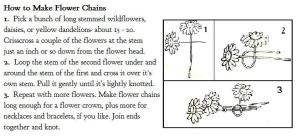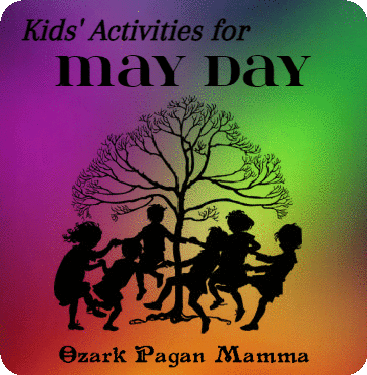When I was first exploring the Waincraft’s Lord of Plenty, it took me a while to truly understand what was meant in their description of this Power. Waincraft specifically describes him as a bear god, but in the deity names listed, he seems to be a bear in name etymology only (Mathgen, Math ap Mathonwy, Matunos…), for in the Celtic myths, I couldn’t find anything that described him the way that Waincraft does.
Waincraft says of the Lord of Plenty; “Across ancient Europe, he was the Bear-King, ruler of the most noble, sacred and mysterious creature in the cultural imagination of the time. He is the protecting and preserving force that ameliorates the harshness of his brother’s realm.”
The parallel concept in Correllian traditions is the King archetype; “The King is the God passed from warrior to leader, nurturing family and community rather than merely himself.”
I came to think of the Lord of Plenty as a strong, kind, and generous King archetype, much like the character of the ghost of Christmas present in the Dickens story A Christmas Carol– but in the 1970 movie adaptation titled “Scrooge”.
And then I came across another bear connection quite by accident. I was looking up American folktales and found the story Whitebear Whittington from the book Grandfather Tales by Richard Chase. I immediately fell in love with this tale that is a cross between Beauty and the Beast and East of the Sun, West of the Moon. I was overwhelmed by the feeling that this is a sacred story full of metaphor- a deeply meaningful mythology disguised as a fairytale, and it opened up a deeper level of understanding for me.
I especially love the story Whitebear Whittington, perhaps partly because the story is a traditional Ozarks and Appalachian tale, so it feels very homey and personal with the imagery and the way it’s told. But I’ve also come to realize that a lot of other bear fairytales have the same kind of archetypal symbolism. In these stories, the bear is always a wealthy prince or a king- a figure of abundance and power. However, in Whitebear Whittington, he seemed to simply be a well-off guy– a strong and gentle man who is also a good provider.
I think a lot of the abundance and comfort feeling of the character comes from the physicality of his bear aspect. On one hand, bears are big, powerful, and scary- so to have a bear as a protector would be very comforting. But bears are also big (abundant) and soft. I’m reminded of the story Snow White and Rose Red, in which the sisters’ mother lets a bear into their home to warm up by the fire.
“The bear said: ‘Here, children, knock the snow out of my coat a little’; so they brought the broom and swept the bear’s hide clean; and he stretched himself by the fire and growled contentedly and comfortably. It was not long before they grew quite at home, and played tricks with their clumsy guest. They tugged his hair with their hands, put their feet upon his back and rolled him about…” –-Grimm’s Fairy Tales
So this image we have of the bear is that of strength and power, but also softness, gentleness, comfort, and abundance. He is a hibernating animal, a very earthy god- he sleeps when nature sleeps. He wakens with the spring. In the tales, he has a dual man/bear nature, until at last the enchantment is broken. If we were to think of these stories as a tale of the seasons, perhaps the spell would be broken in the spring- a peek from the cave at the Winter Thermstice (Imbolc), and full emergence at the Spring Equinox. Then the Bear King becomes a Young God- Hero/Lover- Maponos once again.
In Whitebear Whittington, he tells his bride, “Now I got a spell on me and I can’t be a man but part of the time. From now on I can be a man of a night and stay with you here and be a bear of a day, or I can be a bear of a night and sleep under your bed and be a man of a day. Which had you rather I be?”
This is another reason I like this particular version of the bear fairytale. Whitebear does not try to hide his enchantment, his dual nature, from his bride. She is given quite a bit of choice in the nature of it even. Neither is she held there in fear, for upon arriving at their home, he says, “This house and everything in it belongs to you now, and there’s nothing here to hurt you.”
The bride is never named in this particular tale, but we know her well. She is Youngest Daughter of three sisters. As the story begins, she is a Maiden. As the story progresses, she becomes a Mother. When the story takes a turn, she visits, and wins the favor of; the Crone.
At some point in many of the hero myths, the hero often sees the colors white, red, and black, (such as red blood on white snow, and a raven feather) and decides his future bride must have those colors.
Now white is a symbol for purity, but also for light, and youthful deities of the light half of the year, such as the Maiden. Black symbolizes death and the Crone, but also the substance of decay which creates the fertile conditions for new life to grow, and the dark half of the year. Red symbolizes life blood and fertility and is often a symbol of deities of the ripening season, and the Mother.
This ancient color symbolism is often repeated in fairy tales as well, but more so just red and white, and sometimes dark green is in the place of black. There’s three sisters and the color symbolism is frequently present in the dresses they choose. In Whitebear Whittington, those colors are attached to Whitebear himself. (An earlier telling included the color symbolism of black as well; it was a crow that dropped feathers to lead Youngest Daughter to Whitebear. Chase changed it in the book to a white bird with red speckled feathers.) Then there’s the three drops of blood that were shed on his white fur. These colors indicate that this is a story of the mysteries of light, darkness, and the life in-between. This is Youngest Daughter’s blood, and it marks Whitebear as her own. He is hers and she must reclaim him, awaken him from his enchantment.
Returning again to imagining the story of Whitebear as a seasonal narrative; one could conclude that it could serve as a year-round story. (Though in the actual tale, as it’s told, the events happen one after another and the time of year is unspecified.) But imagine… you could say the white rose was picked on Spring Equitherm/May Day (a time when mates are chosen), then Youngest Daughter was taken as Whitebear’s wife at Summer Solstice (June- a traditional time to get married). Their three children symbolize the harvests of the year. Whitebear’s wife leaves to visit family sometime after Autumn Equitherm/Hallows Eve and soon realizes Whitebear is gone. It would be at Winter Solstice that she receives three golden magical nuts (perhaps symbolizing a Winter Solstice triple sunrise, or their three children & three harvests of the year) from the Crone (out of the darkness, light). At Winter Thermstice/Imbolc (the time of ritual cleansing) she spots him and washes the blood from his shirt, but does not yet have him back. Then finally she finds and wakes him from his slumber and enchantment at the Spring Equinox.








